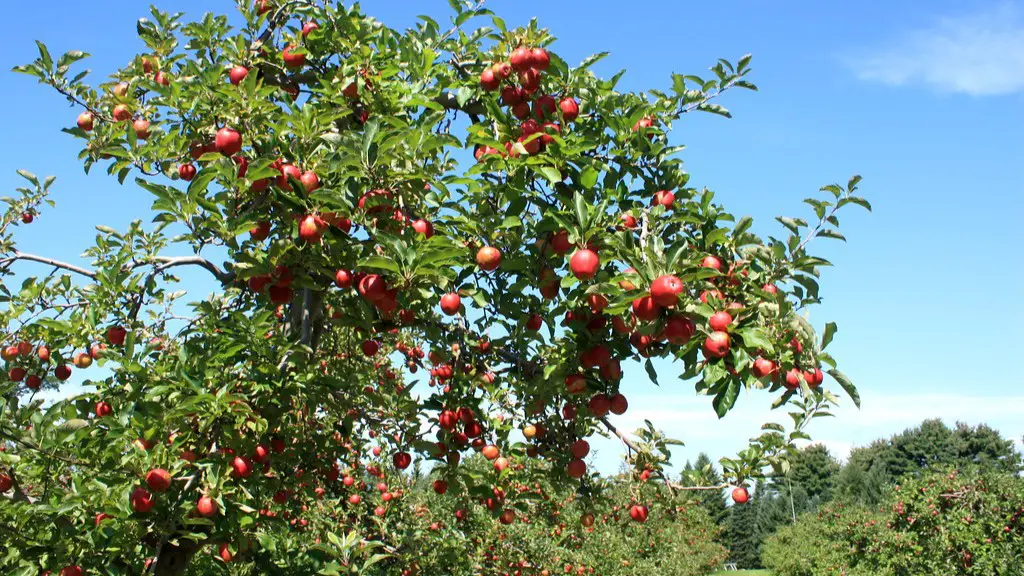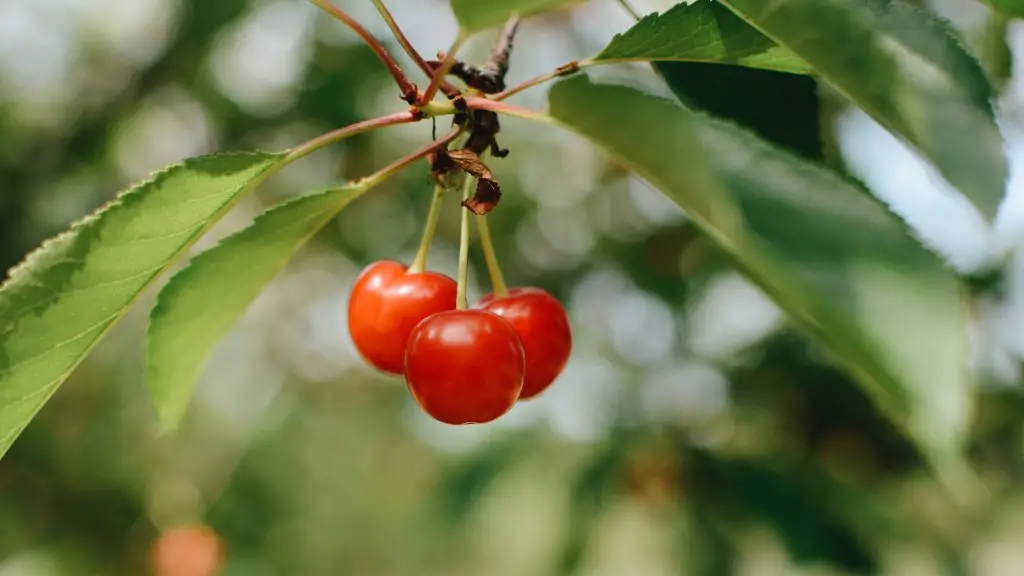The lemon tree is one of the most important fruit trees for the modern gardener. It blooms multiple times throughout the year and produces a crop of delicious citrus fruits. But just how many times does a lemon tree bloom?
The answer is that it varies greatly depending on the climate, the cultivar and other factors. In general, a lemon tree will bloom 2-3 times per year with each bloom lasting anywhere from 2-6 weeks. The frequency of blooms also depends on the age of the tree and its health. Older trees tend to bloom less often, while healthier trees tend to bloom more often.
When it comes time for the blooms, new buds will appear on the lemon tree and open into fragrant white flowers. These flowers will have a bright yellow center and strong, sweet smelling aroma. After the flowers are fertilized, the green fruit will begin to form. As it matures, the fruit will turn from green to yellow as it ripens.
It is important to strive for optimal growing conditions to ensure that your lemon tree blooms frequently and produces delicious fruit. Water your lemon tree regularly and add compost or fertilizer to the soil to provide the necessary nutrients for productive blooms. To prevent the spread of pests and diseases, avoid over-watering and use beneficial insects to help control pest populations.
The number of times a lemon tree blooms can be affected by environmental conditions as well. If the temperature is too cold or too hot, the blooms will not be as plentiful. Providing adequate protection from cold weather and maintaining proper soil moisture can help ensure healthy blooms and a plentiful harvest.
Finally, if you want to maximize the number of times a lemon tree blooms, pruning is essential. Prune your lemon tree to help it grow in an optimal form with ample light and air circulation. This will encourage the tree to flower more often and produce more fruit.
Climate Impact on Blooms
The climate can play a huge role in how often a lemon tree blooms. This is because the temperature, humidity and rainfall can greatly affect the tree’s growth and production. For example, in subtropical and tropical climates, where there is high humidity, the lemon tree may bloom more often and produce an abundant crop.
On the other hand, in areas with dry climates and long, hot summers, the moisture levels in the soil may drop, reducing both the number of blooms and the productivity of the lemon tree. To compensate for this, provide extra irrigation and shade to reduce water loss from the soil and prevent the tree from getting too hot.
In addition to the variations in climate, the chose cultivar of the lemon tree may also affect the number of blooms. Some cultivars are more productive than others, and will bloom more often and for a longer period of time. Therefore, choosing the right cultivar for your location can help ensure maximum blooming.
Finally, the age of the lemon tree also affects the number of blooms. Young trees are often more vigorous, producing numerous blooms, while older trees may bloom less often and produce smaller fruits. Therefore, it is important to choose a tree of the right age, based on your climate and needs.
By taking all of these factors into account, you can ensure that your lemon tree is blooming as often as you would like. With the right care and environment, you can ensure that your lemon tree is blooming profusely and producing plenty of delicious fruits.
Fertilizing for Maximized Blooming
Fertilizing is an important part of ensuring a healthy bloom for your lemon tree. Adding the appropriate amount of fertilizer at the correct times will help the tree to grow and produce more blooms. Recommended fertilizers for lemon trees include those that are high in nitrogen such as ammonium sulfate, ammonium nitrate, or urea. These will help to provide the nitrogen needed for healthy growth and abundant blooms.
In addition to adding fertilizer, you should also mulch around the tree. Mulch can help to retain moisture in the soil, preventing it from drying out too quickly, which can reduce the amount of blooms. It can also help to prevent weeds and other competing plants from taking hold around the tree. Organic mulches such as straw, leaves, or grass clippings can be used.
Finally, pruning can be beneficial in encouraging blooming. Prune away dead or damaged branches and cross-branches, which can interfere with light and air circulation. This can help to maximize blooming as the tree will have more resources to dedicate to growing. Also, prune away any excess fruits that are hanging from branches to help the tree focus on producing new blooms.
In summary, fertilizing, mulching, and pruning are all important components in encouraging blooming in your lemon tree. With proper care and attention, you can ensure that your tree is blooming often and producing an abundant crop.
Disease Prevention for Healthy Blooms
To ensure healthy and abundant blooming, it is important to protect your lemon tree from diseases and pests. Lemon trees are particularly susceptible to fungal infections and can be affected by a wide range of pests. In order to prevent disease, avoid overwatering and check your lemon tree on a regular basis for signs of pests or disease.
To help prevent fungal infections, water the tree early in the day, so that it has time to dry off before nightfall. If possible, water near the base of the tree and avoid wetting the leaves as this can encourage fungal growth. Provide enough direct sunlight, as this can help with disease prevention and increase blooming.
In addition, the use of beneficial insects can help to control the spread of pests. Insects such as ladybugs, praying mantis, and lacewings prey on common citrus pests such as aphids and mites and can help keep the population under control. Other organic pest control methods such as neem oil and horticultural oil can also be used as preventative measures.
Finally, it is important to avoid using chemical pesticides and fertilizers as these can harm beneficial organisms and negatively affect the health of your tree. Instead, try implementing more natural pest control methods, such as companion planting or setting out traps, to prevent pests and ensure healthy blooms.
Overall, there are many steps that can be taken to prevent disease and ensure the health of your lemon tree. With the right care and attention, you can ensure that your lemon tree is blooming abundantly and producing a delicious crop of fruit.
Harvesting the Fruits of Your Blooms
Once your lemon tree is blooming and producing an abundance of fruit, it is time to begin harvesting. Pick the fruit once it is ripe, as this is when it will have the most flavor and nutrient content. To check if a lemon is ripe, give it a gentle tug and if it comes away easily, it is ready to be picked.
You can also pick lemons that are still green and allow them to ripen off the tree. This is beneficial if you want to use the lemons at a later date or are waiting for the fruit to reach peak ripeness. When picking, be sure to handle with care as the lemon skin is delicate and can easily be punctured or bruised.
It is important to keep up with the harvesting of your lemons as leaving them on the tree for too long can cause them to over-ripen and drop to the ground. This can attract pests and cause the fruit to rot, wasting the energy that went into producing that fruit. Additionally, over-ripe fruit can also be difficult to store and may not be as flavorful as fruit that is picked at the optimal ripeness.
Harvesting your lemons regularly will also help the tree to focus its energy on producing new blooms and promoting growth. By harvesting the fruit regularly, you will encourage the tree to extend its blooming season, resulting in a larger crop in the end.
In conclusion, harvesting your lemons regularly can help to ensure that your lemon tree is productive and blooms often. By picking the fruit while they are ripe and harvesting regularly, you can ensure that your tree has enough energy to keep blooming and producing delicious fruit.




